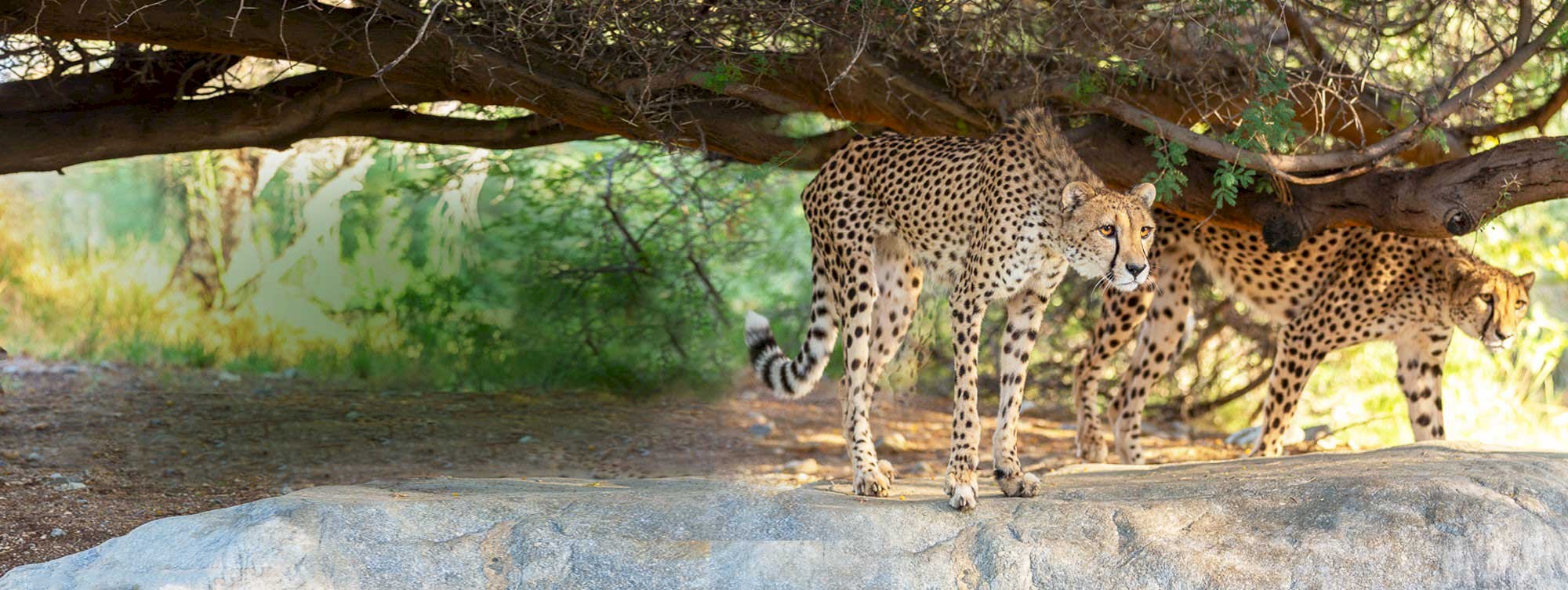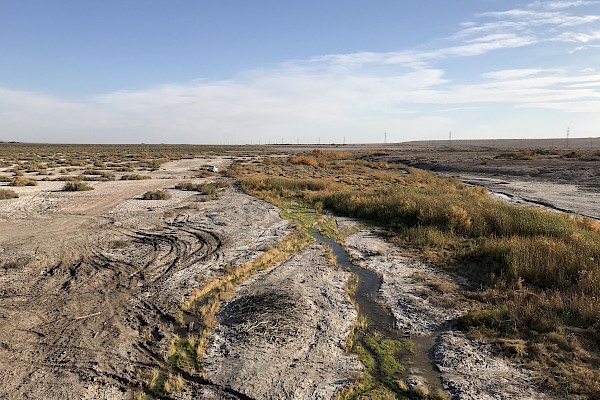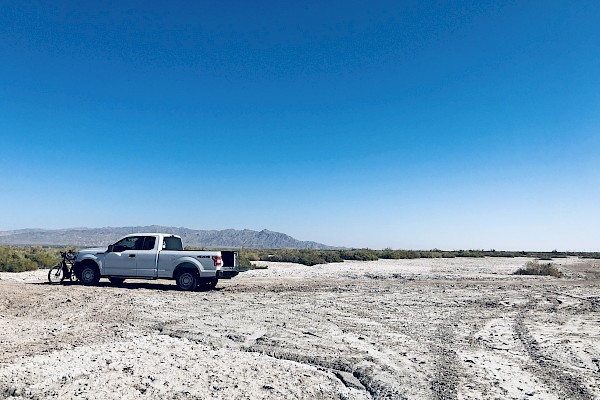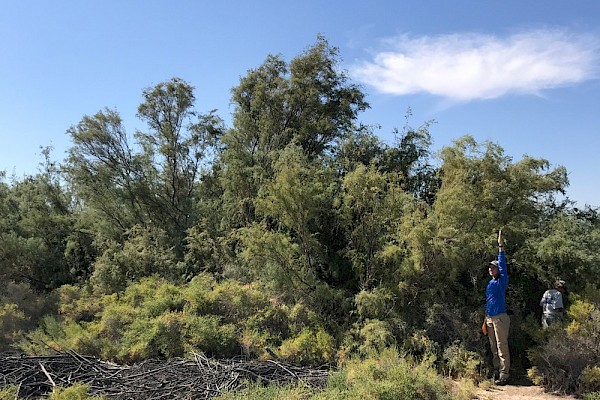Why restore Salt Creek?
Kyle Mulroe, TLD Conservation Biologist January 23, 2021One of the exciting parallels to the work we do conserving species on grounds here at the Living Desert Zoo and Gardens is working to conserve species living in their native environments. One local example of our combined ex situ and in situ approach has been the conservation of the desert pupfish both in refugia (ponds) on our grounds and in a restoration of their native habitat at Salt Creek. Salt Creek is a natural waterway emanating from aquifers below Dos Palmas Preserve near Mecca, California and terminating into the Salton Sea.
You may be curious, where did the name Salt Creek come from? The short answer is that Salt Creek is actually salty, both the surrounding soil and the water itself. Visually, the salty soil can be seen like a blanket of muddy snow near our worksite. As the extreme heat and arid air of our desert evaporates the water of Salt Creek, natural salts and minerals from the aquifer precipitate out at the soil’s surface.
Why is that important, besides the interesting name? Well as the soil gets saltier, it becomes more difficult for many plants including our native species to germinate there. However, one non-native species that is quite salt tolerant is the invasive tamarisk. A plant native to Eastern Europe and Russia, tamarisk has taken over Salt Creek and many waterways throughout the Colorado River system. Tamarisk outcompetes native plant species, forming dense, shady stands that hungrily suck up water from the creek. Tamarisk can be identified as a cause of surface waters in Salt Creek drying up during the hottest parts of the year, threatening the endangered desert pupfish.
The desert pupfish thrives in warm, unshaded waters. In our three desert pupfish refugia on zoo grounds, you will likely see the desert pupfish only during our warmer months. Removal of tamarisk from Salt Creek not only leaves more water for aquatic organisms, but it also removes the shady canopy above the creek, allowing desert pupfish the warm water temperatures in which they flourish. A secondary effect is that this strong sunlight helps promote freshwater algae and phytoplankton, key parts of the desert pupfish diet and foodweb.
With the case for eradicating tamarisk from Salt Creek quite clear, we set out to remove this notoriously aggressive species.
We thank Coachella Valley Mountain Conservancy for the funding of this project, and thank the Bureau of Land Management and the California Department of Fish and Wildlife for their generous collaboration.













